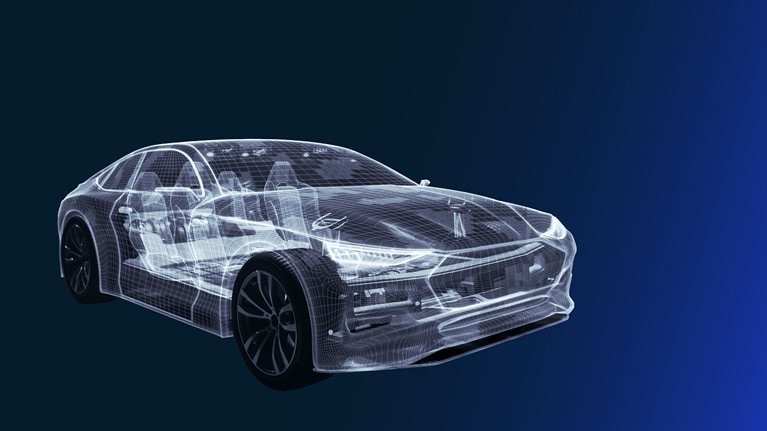A momentous shift is occurring within the mobility sector as sustainability concerns accelerate and the internal combustion engine (ICE) begins to lose market dominance. Along the ICE value chain, suppliers may soon reach a pivotal moment when growth first plateaus and then declines. Although the transition to electric vehicles (EVs) is already under way, ICE suppliers can still find many value-creation options over the short and medium term, especially if they draw inspiration from companies in other industries that have successfully navigated similar disruptions.
From a roar to a hum: The declining market for ICE vehicles
Automotive players have successfully navigated the first two decades of the 21st century, simultaneously creating value for shareholders while supporting better emission standards. Their achievements are notable, considering that the Great Recession of 2008 severely depressed automotive sales (see sidebar, “The remarkable resurgence of OEMs and automotive suppliers”).
ICE-power-train suppliers have benefited from the automotive sector’s recent growth and have greatly improved their operational performance. Their product lines generated $240 billion in business by the end of the 2010s and now employ millions of people. But the signs of the impending transition to EVs are already clear, as are the challenges that lie ahead.
Over the past 12 months, more than 15 automotive light-vehicle OEMs have announced plans to sell only zero-emission vehicles (ZEVs)—typically EVs—in the near future. The combined total output of those OEMs represents more than 75 percent of global vehicle production. Moreover, more than half of them plan a full transition to ZEVs before 2040. If those plans materialize, the growth of many ICE product lines could see double-digit declines. Exhibit 1 shows our base-case scenario for the sales of various ICE components through 2035.

Forces beyond electrification, including the evolving nature of work in manufacturing and operations, the accelerating adoption of digital technologies, and constant shifts in supply chains, are also disrupting the automotive sector. Such trends will also create additional challenges and opportunities for automotive players in the decade ahead.
A cross-industry perspective: How other sectors have weathered disruptions
ICE-component suppliers that can manage uncertainty and execute well during these challenging times can still create significant value from their traditional products over the short to medium term. To succeed, however, they will need a new operating model that focuses on four activities:
- formulating structural and dynamic responses to continuing disruptions
- creating a new operating model with a clear focus on building value through higher return on invested capital1 (ROIC)
- building capabilities that can unlock value
- establishing a strong sense of urgency
Companies in other sectors have adopted similar models to weather disruptions. Consider the power-generation market, which has many similarities to the ICE market. As the transition to renewable energy accelerated, the management of one European energy company knew that the market would still need cost-effective, flexible, and reliable power generation through traditional methods, at least for a time, since renewables were not yet dominant. While the energy company acknowledged the disruptions within its industry, it kept its focus on traditional fossil fuels. The company’s management positioned it as a link between the current energy market and the energy market of the future and noted that customary power generation would continue until our energy system no longer required it.
To execute the new goals, the company began servicing existing energy systems—a logical move, given its expertise with conventional power generation—and created a new revenue stream. In addition, it strategically acquired several new coal and gas plants and reduced their costs to the furthest extent possible. Those strategies helped the company increase its earnings before interest, taxes, depreciation, and amortization by more than 50 percent in the second half of the 2010s, creating substantial value for its shareholders.
Companies in other industries have also identified effective strategies for managing change. For instance, large pharmaceutical companies must take into account the full product life cycle, including the stage when patents on established products expire and those markets begin to decline with increased competition. In such cases, leading players often create separate business units for those products and evaluate their performance with different metrics. They also follow a lean operating model to maximize operating efficiency in line with adjusted sales projections. As another example, integrated steel companies realized that their long-term prospects could be in jeopardy as more customers shifted to mini mills, which require a lower investment. In response, many of the companies expanded their product portfolios into adjacent markets to capture more value and take advantage of their existing capabilities.
Accepting disruption: Why a fundamental shift in business approach and focus is necessary
Value-focused executives know that growth and ROIC are the most critical elements when attempting to create shareholder value. The adage that “growth is good” still applies, and a better ROIC will drive economic value.
From 2010 to 2019, automotive suppliers generated positive—even outsize—growth by catching sector tailwinds. They also benefited from the recovery from the Great Recession of 2008. Players in the top quartile for growth in total shareholder returns distinguished themselves from the pack by their ability to improve ROIC (Exhibit 2). That strategy allowed them to generate stronger returns through margin expansion while maintaining healthy levels of invested capital to drive growth.

During the latter part of the 2010s, ICE components, including engine blocks and transmission housings, began to experience slower growth. As 2020 approached, the markets for the products were stagnant or in decline. With growth in jeopardy, ICE-component suppliers should look for other opportunities to drive value by improving ROIC.
To help chart a path forward, we assessed companies with large portfolios in ICE-product domains. Although the industry is well established, and ICE-product technology is mature, we found a broad range of performance along the key subcomponents of ROIC. If the lower performers elevate their performance to match the industry median, they could improve their enterprise value by 30 to 40 percent from baseline (Exhibit 3). Thus, the industry still has plenty of value left to create, even as EVs gain ground. Some ICE-component suppliers could be potentially attractive targets for incumbents, venture-capital funds, and other turnaround players.

New challenges call for a new approach: How ICE-component suppliers can maximize value this decade
As ICE-component businesses attempt to capture value, they must make a fundamental separation within their companies to realign business models for value creation. The part of the business that still has near- to medium-growth potential would become the company’s growth engine. It would contain areas such as new-vehicle programs and the aftermarket, and businesses would focus on targeted expansion opportunities in these areas. The second part of the business would be the execution engine. It would contain ongoing vehicle programs with limited upside, and the focus would be on fulfilling existing commitments and taking a zero-based approach to managing costs.
After ICE-component suppliers separate themselves into growth and execution engines, they can develop tailored strategies, incentives, and metrics for each one (Exhibit 4). Some of the most important tasks will include the following:
- Optimizing strategic operations. Companies should attempt to optimize their manufacturing footprints and general and administrative staffing levels, among other operational improvements. They can gain an edge by examining cleansheet costs and applying digital levers to support near-term growth and enable best-in-class execution.
- Restructuring the supply base. A simplified yet stable supply base will enable value creation in the near to medium term and help companies that want to outlast their competitors in a tough environment. To increase productivity and lower risk, a company may choose to consolidate their supply base or product portfolio.
- Optimizing capital planning. Companies must develop a detailed plan for allocating capital and a summary of near-term opportunities to shed some assets across the value chain. This strategy will minimize the risk of having stranded assets over the long term.
- Pursuing targeted growth in core business. Companies can deploy a tactical set of commercial levers to maximize margin across original-equipment, original-equipment-service, and independent-aftermarket businesses.
- Making bold moves to develop new core business. Undertaking roll-up M&A and exploring additional opportunities or adjacent sectors may help companies offset the long-term decline in ICE revenues.

Manage execution engines to cleansheet costs and reduce carbon footprint
The parts of ICE-component suppliers that serve as execution engines could rapidly restructure their operations to be ready for the eventual decline. First, they could revisit their core versus noncore product lines and design new operating strategies to optimize manufacturing capacity, footprint, and sales, general, and administrative costs by taking a zero-based, cleansheet approach to costs.
Second, companies could prune their core-product portfolios and design a simplified yet stable supply base to enable “last one standing” and value creation in the near to medium term. Finally, they could limit growth-focused capital expenditures while providing enough sustaining capital expenditures to continue running their businesses.
Would you like to learn more about the McKinsey Center for Future Mobility?
As companies restructure the parts of their businesses that serve as execution engines, they may also transition to more sustainable operations that reduce their carbon footprints. For instance, they might revisit packaging and transportation or consolidate the supply base to embrace more sustainable energy sources and manufacturing technologies.
Manage the growth engine to zero
Organizations should selectively pursue growth for the parts of the business that still have potential, always taking a detailed look at expansion opportunities. As part of this effort, they should develop a clear assessment of any potential scale impact on the cost structure and launch fact-based negotiations when appropriate. Their evaluation of growth opportunities should occur at a detailed level—for instance, examining specific geographies and emerging customer groups that appear to have a positive net present value. Companies can also explore adjacent markets, such as those for off-highway vehicles and marine applications, to slow the pace of sales-volume decline. Again, ICE-component suppliers must be very selective.
The aftermarket may also present a good growth opportunity, given its traditionally higher profit margins and longer staying power compared with OEM production. In fact, ICE-component suppliers could find aftermarket opportunities in servicing ICE cars through the 2040s and beyond, since there is likely to be a significant volume on the road through that time.
Build the organization’s M&A muscle
The ICE market will fundamentally change over the coming decade, and industry players have a choice: they can be the ones shaping the market or those responding to the shifts. It is imperative that organizations increase their M&A muscle and focus on supporting value-creation strategies. For example, companies might follow a targeted roll-up strategy for the part of the business that serves as their execution engine. This approach would help them maintain scale and sustain fixed-cost absorption at a time of declining growth and low valuation premiums. Companies could also, as noted earlier, explore adjacent growth pockets, such as new geographies and products, for the parts of their businesses that serve as growth engines.
Recalibrate performance systems
Although ICE businesses may focus on execution and growth to different extents, they will all benefit by reconsidering the value-creation story that they create for external investors. They might also benefit from revising internal performance-management systems to emphasize the importance of ROIC and its subcomponents. As a first move, they could reorient performance metrics, including internal key performance indicators and leadership incentives, to reduce the weight on growth and increase the emphasis on improving ROIC and its drivers, such as cash preservation.
Issues ICE-component suppliers can consider when adjusting to disruption
Disruptions drive significant change, but they also create massive uncertainty because it is unclear how quickly and evenly major shifts will occur. The automotive industry is now confronting this uncertainty, but stakeholders can be sure of certain facts. First, the energy transition will change the transportation of people and goods to an extent not seen since the invention of the steam engine in the 1700s. Some changes have already occurred in response to new regulations, such as the California Air Resources Board’s guidelines and the European Union’s Fit for 55 proposal, which seeks to align climate, energy, land-use, transport, and taxation policies to reduce net greenhouse-gas emissions by at least 55 percent by 2030. Specific events, such as the potential passage of the US infrastructure bill, could also alter the industry’s path.

Why the automotive future is electric
It is also clear that the transition to clean energy will occur incrementally, giving businesses time to prepare. For best results, ICE-component suppliers might consider acting now, since they might capture a first-mover advantage and create substantial value for shareholders. But in a complex, fast-changing, and unpredictable environment, this is no simple task. C-level leaders must be in the driver’s seat, based on the value at stake. Such leaders might want to stress-test their current strategy, as a first step, to assess risks and develop a new blueprint. As they examine their options, they could benefit by considering the following questions:
- What is the value-creation story? Each business has a unique product portfolio and customer mix, both of which influence its potential revenue growth. Businesses are most likely to succeed if they clearly understand the best opportunities for generating value and craft a compelling story for shareholders.
- What is the best way to reconfigure the product value chain, and what are the right strategies for the business? Depending on the product lines that ICE businesses possess, their future moves could differ significantly. For ICE businesses focused on components that may have limited aftermarket-growth potential, such as exhaust systems and driveline parts, the best path forward may involve placing greater emphasis on restructuring and M&A. ICE businesses that focus on components with high aftermarket exposure, such as starters and alternators, might benefit most from a balanced approach that involves pursuing targeted growth opportunities while restructuring. Other factors that could affect a company’s strategic priorities include whether it has design control and the degree of vertical integration by OEMs. Certain components, such as engine blocks, could see demand decline further if OEMs insource production when their ICE volume declines.
- What capacity and capabilities are needed to execute a different strategy for the next decade? To execute a revamped value-creation strategy, companies may need to rethink their capacities. For all parts of their business—those with growth potential and those without—company leaders must adopt a zero-based mindset. That will involve determining what is needed to “keep the lights on” and what could deliver additional benefits above the cost required. Similarly, companies should determine if they have the digital capabilities required to excel. While they may need to invest in training, companies will likely discover that a greater focus on digital will significantly lower their operating costs, more than justifying the expense.
- How does the company retain, excite, and grow talent as the ICE end stage approaches? Transformation is difficult, even more so when the broader business environment presents new challenges. But stressing talent acquisition, retention, and employee capability building will be critical to success. In fact, a company’s talent strategy could be even more important than its ability to execute a transformation.
The changes confronting ICE players over the coming decade are enormous. While they may never have experienced such disruptions, companies in many other industries have already weathered similar transitions. Understanding how the leaders in those industries persevered—and why others did not—can help ICE-component suppliers improve value capture and create a road map that will help them thrive, not just survive, as they contemplate the end of the automotive ICE age.


